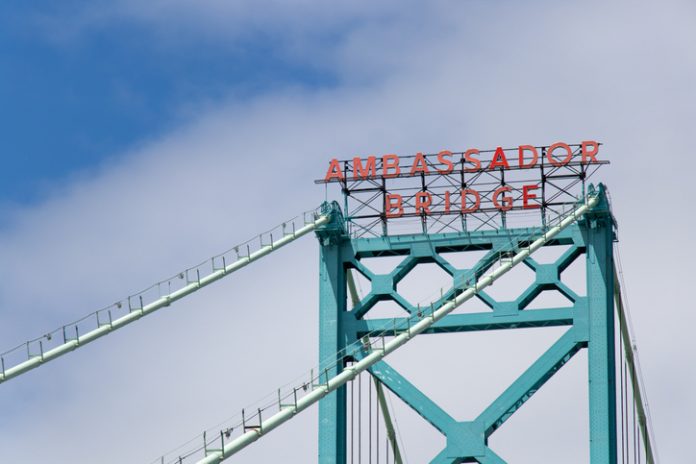CBC Power and Politics interviewed recently appointed United States Ambassador to Canada David Cohen last week. He said it was “doubtful” that the border blockades and freedom would impact trade relations between the two countries.
His comments came after the declaration of the Emergencies Act and the eventual dismantling of demonstrations and border blockages at four crossings between Canada and the United States.
We have just lived through a history lesson and proof of the dependency on our Southern neighbour.
China is the number one trading country, followed by the United States, Canada is 14th. On a per-capita basis, Canada we more than carry our weight. We consistently rate high in best countries to live, this high “liveability” index is thanks to our global trading. But most of our trade is with the United States.
In 2016, Canada’s total trade (exports plus imports) with the United States accounted for 64.0% of Canada’s total merchandise trade with the world.
Our relationship with the United States is essential to our well-being.
A publication by the U.S. State Department describes the significance of our relations this way. The United States and Canada share the world’s longest international border, 5,525 miles, with 120 land ports of entry. Our bilateral relationship is one of the closest and most extensive. Nearly $1.7 billion a day in goods and services trade cross between us every day.
Incredibly, our border crossings blockades lasted as long as they did.
The border blockage crisis quickly blew up in our faces. Deputy Prime Minister and Finance Minister Kristia Freeland went so far as to say, “The world’s confidence in Canada as a place to invest and do business is being undermined.”
Implementing the Emergency Measures Act was a dangerous political move for the Liberals. They had little choice. Implementing the act opened the Liberals to criticism. Several members of the Conservative party openly supported the Convoy, opening them to much criticism as well. Conservative party leader Erin O’Toole took a weak stance on supporting the removal of mandates, which expedited his dismissal as party leader.
Canada’s reputation as a peace-loving, safe and democratic nation was playing out in real-time by global media. The demonstrations and border issues needed to end quickly and without violence.
While the border crisis was destabilizing Canada’s global position., it was also becoming big news in the U.S. A rare occasion when U.S. media paid any attention to Canada.
U.S. free trade critics and protectionists would rather see manufacturing jobs in the U.S. Ambassador Cohen spoke to various elected politicians in the U.S during the crisis. He noted that some in Michigan did have concerns with trade from Canada.
Certain U.S. politicians argued that U.S. jobs were at risk as products needed for production were blocked at the border. An economy playing catch up from the pandemic did not need another slowdown.
President Joe Biden’s low approval ratings did not help. Fear in the Canadian auto sector is that his Build Back Better program will fast-track American-made electric vehicle production while cutting out Canadian jobs entirely. Any slowdown of Canadian auto parts might only add to that agenda.
Canada Automotive Parts Manufacturers Association president Flavio Volpe went so far as to say that “this is the worst time in the last 50 years to be pointing out to international investors that Canada’s access to the US market is not guaranteed.”
Doug Ford was also on the hot seat, as he is seeking reelection later this year. U.S. trade is what fuels Ontario, its jobs, and its economy.
Ford said of the border blockade, “I’ll tell you what will be permanent, we’re (not) gonna allow people to block $700 million of trade every single day. There’s absolutely no way that people are going to go [to Windsor] and block a trading corridor, like the Ambassador Bridge. It’s unacceptable.”
Anger and fear were palpable in politicians and business leaders on both sides of the border.
For the general populace, the shock was simple. How could a relatively small group of protestors suddenly hold a country and the streets of its capital to some form of ransom? And do it with relative impunity and so very quickly and competently?
With somewhat astounding efficiency once the act came into play, the demonstrations ended peacefully. Ottawa protesters who had vowed never to give up have mostly gone, chased away by police in riot gear in what was one of the biggest police operations in the nation’s history.
Jagmeet Singh, leader of the NDP vocalized, “This is an attack on our democracy. This is a group of folks who are very clearly connected to the extreme right-wing, The organisers have a goal in mind to undermine democracy. That’s something we can’t allow to continue,”
Some of the protests were almost cheered on in the U.S. by Fox News personalities and conservatives including former President Donald Trump. Millions of dollars in donations flowed across the border to the protesters. Rebel Flags and baseball hats saying “Make America Great Again” were on the streets of Ottawa.
Canada and the United States are each other’s largest export markets. Many U.S. jobs depend on Canada, as it is the number one export market for more than 30 U.S. states. Canada is the single largest foreign supplier of energy to the United States. Canada holds the world’s third-largest oil reserves. Canada and the United States operate an integrated electricity grid under jointly developed reliability standards. Canadian mined uranium helps fuel U.S. nuclear power plants.
Ambassador Cohen commented that “I do think that Canada, at all levels of its government, has behaved responsibly in managing these demonstrations and protests. I think the priority of Canada, in opening up trade routes and in opening up ports of entry so quickly and efficiently was essential not only for restoring decorum, law, and order to the country, but to preserve and to avoid the adverse impact on Canadians and Americans whose jobs were in jeopardy as a result of those demonstrations.”
Our shared border is one invisible line between two countries upon which millions in both countries depend.



















